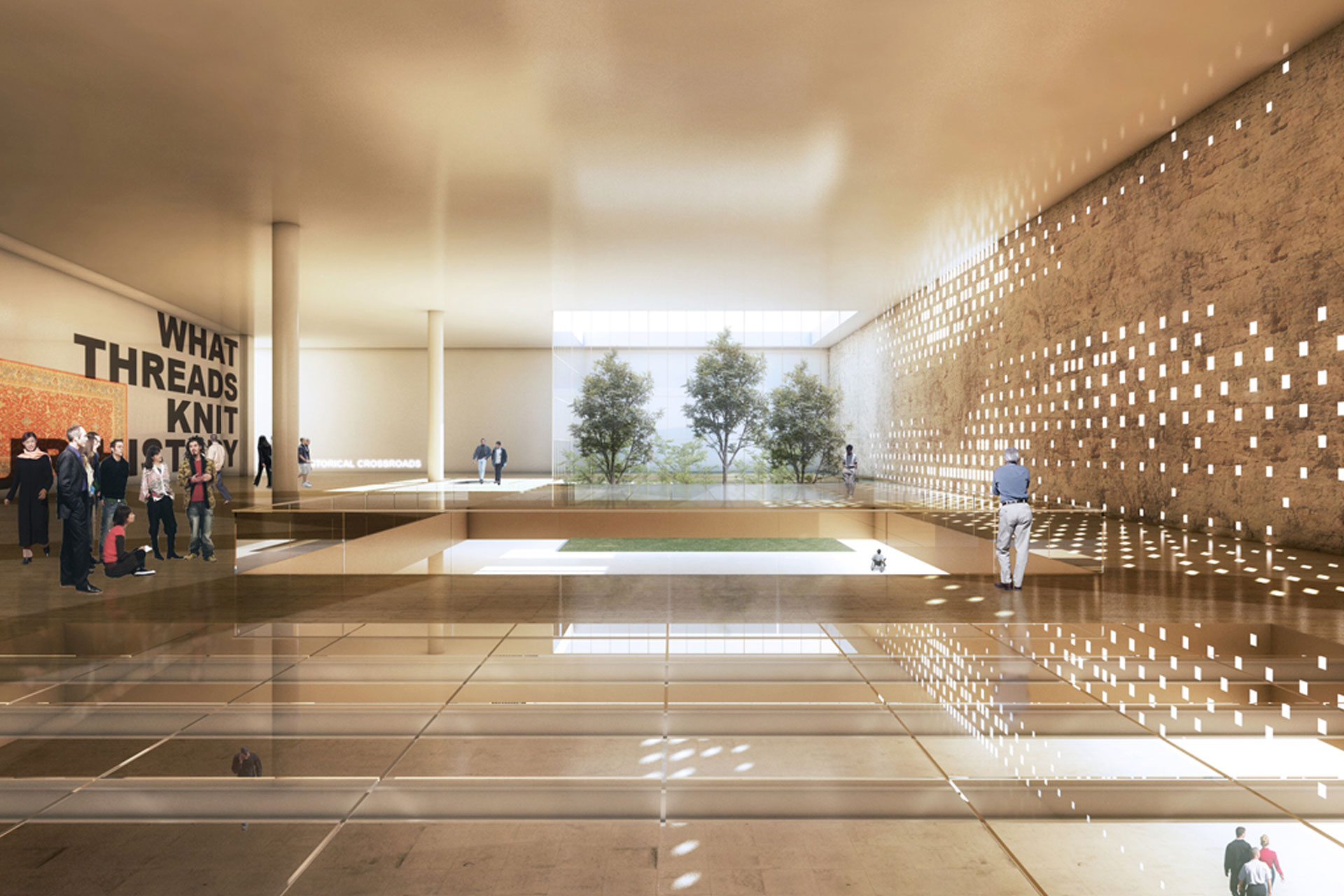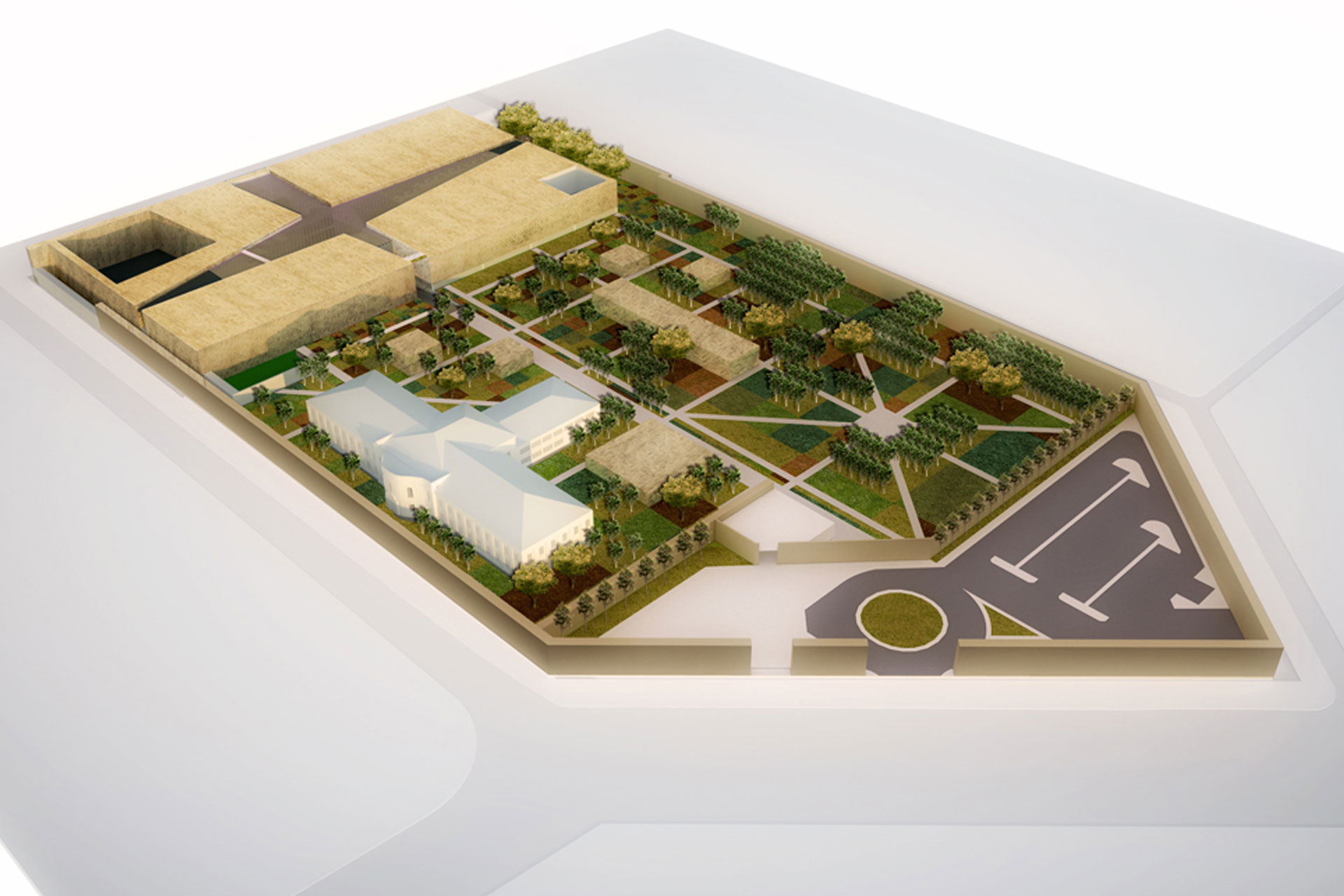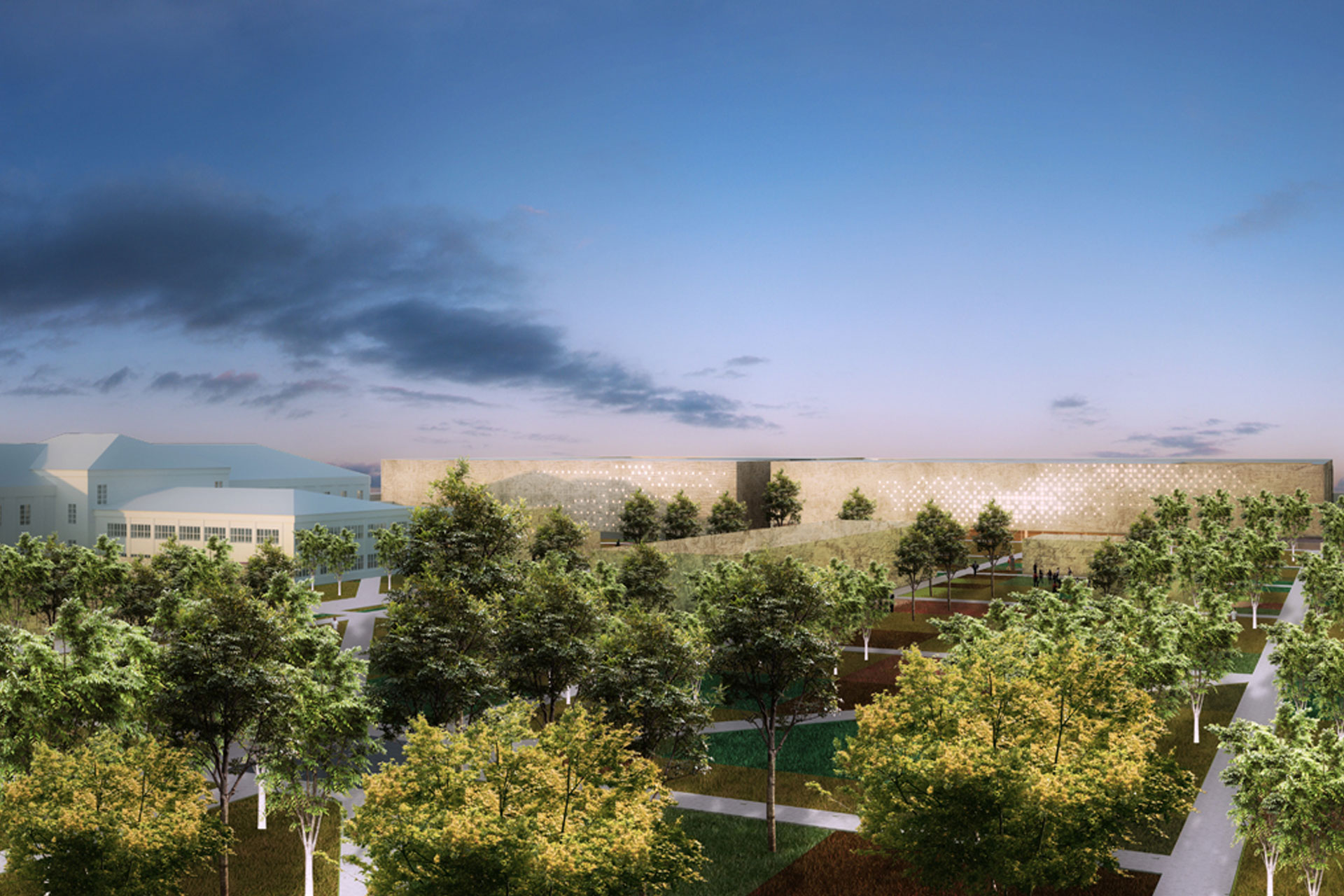NATIONAL MUSEUM OF AFGHANISTAN
Afghanistan is the land where ethnic differences coexist face to face every day, where cultures have established their homes after many years of being nomads, the place where all roads and routes intersect. The people of Afghanistan are a cultural amalgam eroded by the constant coming and going of the ethnic groups that make up the area, from which many have been influenced and others have absorbed. A country that dreams of a nation project capable of integrating all these differences under its own discourse and not one imposed.
The New National Museum of Afghanistan, in Kabul lays its conceptual foundations on Afghan people and their version of history; a project that offers a new reading of the facts through its ethnography and archaeological treasures, complemented by technological strategies of multisensory museographies. The project offers a safe space where knowledge can be generated and shared with all, a place of coexistence, an urban square inscribed in a museum.
Using the metaphor of the mountain as the place where knowledge is obtained, as well as a place of refuge, a building is created as a solid block that integrates with the local landscape and the people, from the use of materials local and artisan techniques of stone carving.
As one approaches the building, its apparent strength and impenetrability is broken by two compositional axes that generate a series of access cracks to the complex: a form of tribute to the ability of the Afghan people to find shelter by digging into the rock. Both axes allude to the crossroads that have defined the history of Afghanistan; On one hand, the political axis that points to the ancient palace of Darul Aman, now in ruins because of the bombings; and on the other, the religious axis, which points towards Mecca as recognition of the role played by Islam as part of the Afghan culture.
This is how the New National Museum of Afghanistan is a tribute to the resistance of the Afghan people and their persistence in the search for a better future.
THE RUG NARRATIVE
Almost all the demographic statistics of Afghan people agree that only 20-25% of its population can read and write, a figure that is undoubtedly very low. However, throughout history we found that the fabric of rugs, an activity common to all ethnic groups, has functioned as a form of expression and writing.
The rug as a multipurpose element has been very important as part of the Afghan culture and economy. Able to satisfy many needs, they have been used as a floor, as a bed, as a piece of furniture, even as a portable space. In the rugs, we find an object of the daily use of nomadic tribes up to modern families.
The process of weaving a rug involves the creation of textiles by the technique of cross-linking of threads, which forms figures, symbols and patterns depending on the use of the mat. The Afghan people have devoted many years to perfecting the technique, until turning them into the form of expression of their imaginaries. Thus, combining shapes and figures, have created narrative, historical, ornamental, prayer, famous people, politicians and even war rugs.
This is how the idea of creating a museography based on rugs was born as a narrative, which on one hand allowed us to knit the knowledge of the history of the country and on the other to involve and recognize local artisans as part of the development of the new museum.
In this way, the project of the nation of Afghanistan could be understood as the fabric of a great carpet, which finds its points of agreement in the crossing of the threads of cultural differences.


